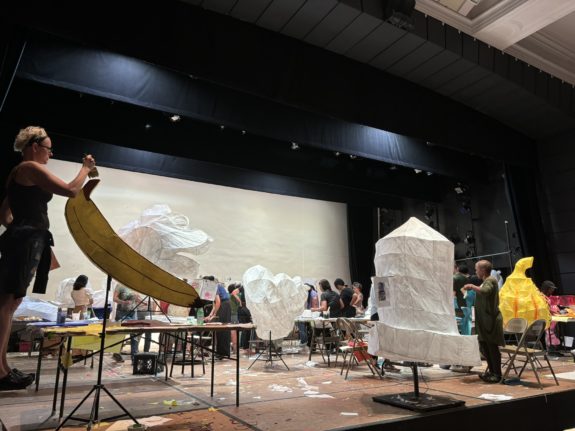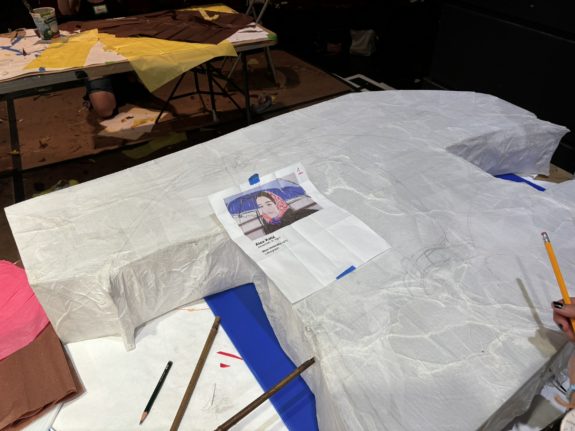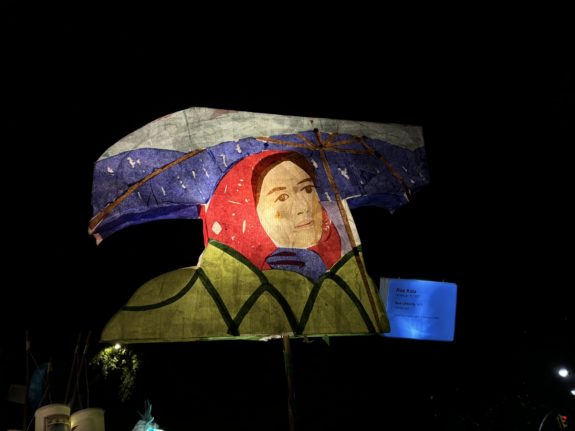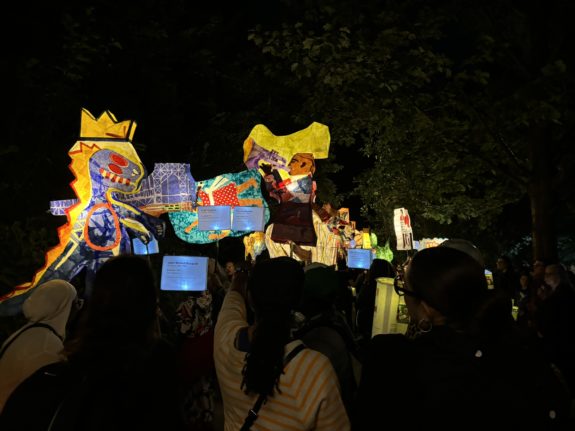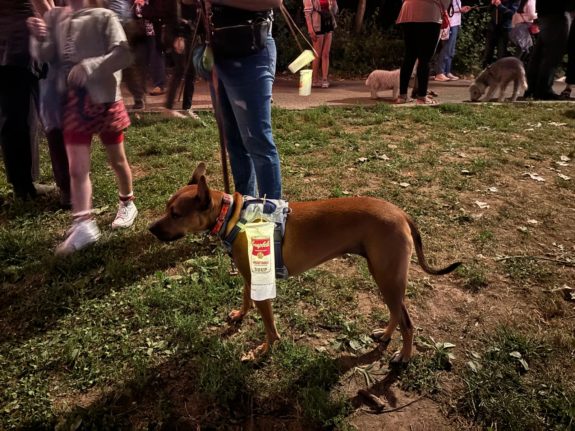Managing Editor Alison Hog finds community and love in the 13th Annual Morningside Lights.
As I stood in the middle of College Walk, paper lantern held up high, a feeling of nostalgia washed over me, of knowing I would miss this moment before it was even gone. Surrounded by hundreds of smiling faces and vibrant lights, I was moved and energized by the sight in front of me.
Morningside Lights is an annual tradition that brings the Morningside Heights and surrounding communities together in a themed-based paper lantern procession. Since 2012, Alex Kahn and Sophia Michahelles, co-artistic directors of the Processional Arts Workshop, have produced the event in collaboration with Columbia’s Miller Theatre and Arts Initiative. This year’s 13th edition brought the theme In Retrospect: 100 Years of New York Art to life in a tribute to a century of New York art and artists that have left their imprint on the city and its people.
Morningside Lights’s paper lanterns are all about collective expression. The designs were chosen from ideas sent in by community members and then built through a series of free workshops at the Miller Theatre. Attendees could take part in any and all of the four stages of the process, from assembling the structure with wire to bringing the paper lanterns to life through colorful sheets of tissue paper.
This year, the crafters were encouraged to take ownership of famous New York artists’ work. Honoring them, however, does not necessarily mean following their exact formula; it also involves allowing each creator’s personality to shine through by giving it personal touches.
“I encourage you all to indulge in some experimentation,” Khan told us at the beginning of Thursday’s evening coloring workshop. While certainly a scary directive, it challenged us to let loose and be playful in the creation process.
For the workshop, many of us were grouped with other attendees and were given a lantern to work on together. My friend, a visual artist, and I were matched with Michelle, a lovely graphic designer who lives in the Bronx and who began her Morningside Lights journey back in 2021.
Because of the COVID-19 pandemic, Michelle shared with us, the event was held virtually that year. Volunteers were given a kit with all the necessary materials and with the help of Zoom workshops led by Kahn and Michahelles, they created the lanterns from the safety of their homes. Participants were asked to record their progress, culminating in individual processions in their respective neighborhoods. The resulting video is nothing short of moving—little kids, families, and community members work on their Shakespeare-themed lanterns on their home floors and tables, turning everyday spaces into impromptu studios. It is a demonstration of resilience and hope, a beautiful reminder of the ways people can make the best out of less-than-ideal circumstances.
Michelle guided us along the process to best render Alex Katz’s Blue Umbrella lithograph on the lantern. From how to sketch the painting to how to achieve the ideal shade of blue, she encouraged us to be active participants. Though admittedly I largely only admired my fellow volunteers through the sidelines, too afraid to mess anything up, Michelle displayed a level of patience and kindness that is true to what stands at the core of Morningside Lights. It is not about perfection but about true collaboration.
“We won’t know what [the lanterns] look like until Saturday night,” Michahelles shared with me that evening. After all, they would be turned on for the first time briefly before the start of the parade. But, it was already clear to me. I didn’t have to wait to see what these illuminated forms of art would look like—they already looked like mutual respect and trust, attachment and love. There was something so magical about this blind collaboration, building on the work of someone you will never meet and treating it with the same care as if it was solely yours.
Final stage workshop: Creating final imagery with colored tissue paper
That Saturday, September 21, the procession began at 8 pm under pleasantly warm weather, making its way from Morningside Park to Columbia’s College Walk. The 43 finalized lanterns, from Andy Warhol’s Banana to Jean-Michel Basquiat’s Dinosaur, were breathtaking, glowing as much as the faces of its bearers. I held my lantern, Roy Lichtenstein’s Drowning Girl, high in the sky, hoping I was making all its creators proud.
We made our way steadily along the path, surrounded by other members of the community. Many of them were carrying one of the 200 nano-lanterns, miniature plastic lanterns that were distributed early in the evening and that also honored vibrant New York art. Hundreds of marveling spectators welcomed us every step of the way. They smiled, laughed, gasped, waved, and immortalized the moment with their phones. Some of them joined the parade. I spotted a middle-aged man with his Chihuahua (who was wearing an adorable pink sweater) in his arms. He met us right at the beginning and didn’t stop vlogging or holding his lifelong friend for the entire procession. As we walked side by side, it felt like we were no longer strangers. For one hour, we were all one.
The grand finale happened along College Walk. Each lantern bearer was paired up with another one, each facing the other as a sort of runway was created. The last lantern bearers made their way through it, welcomed by resounding claps. What made this occasion even more significant was that this was the first time since last semester that Columbia’s main gates were opened to the public. There was something so striking about that now rare sight—a feat only to be achieved by an event like Morningside Lights, one which opens its doors to anyone who wants to participate.
Morningside Lights parade
Morningside Lights is a unique event in that it is one of the few occasions where the Harlem, Morningside Heights, and Columbia communities can seamlessly unite across economic strata, generations, and interests. That is the power of art.
It is hard not to be drawn by the magic of Morningside Lights. More than an annual parade, it is a love letter—a tribute to our community.
Images via Author


 0 Comments
0 Comments